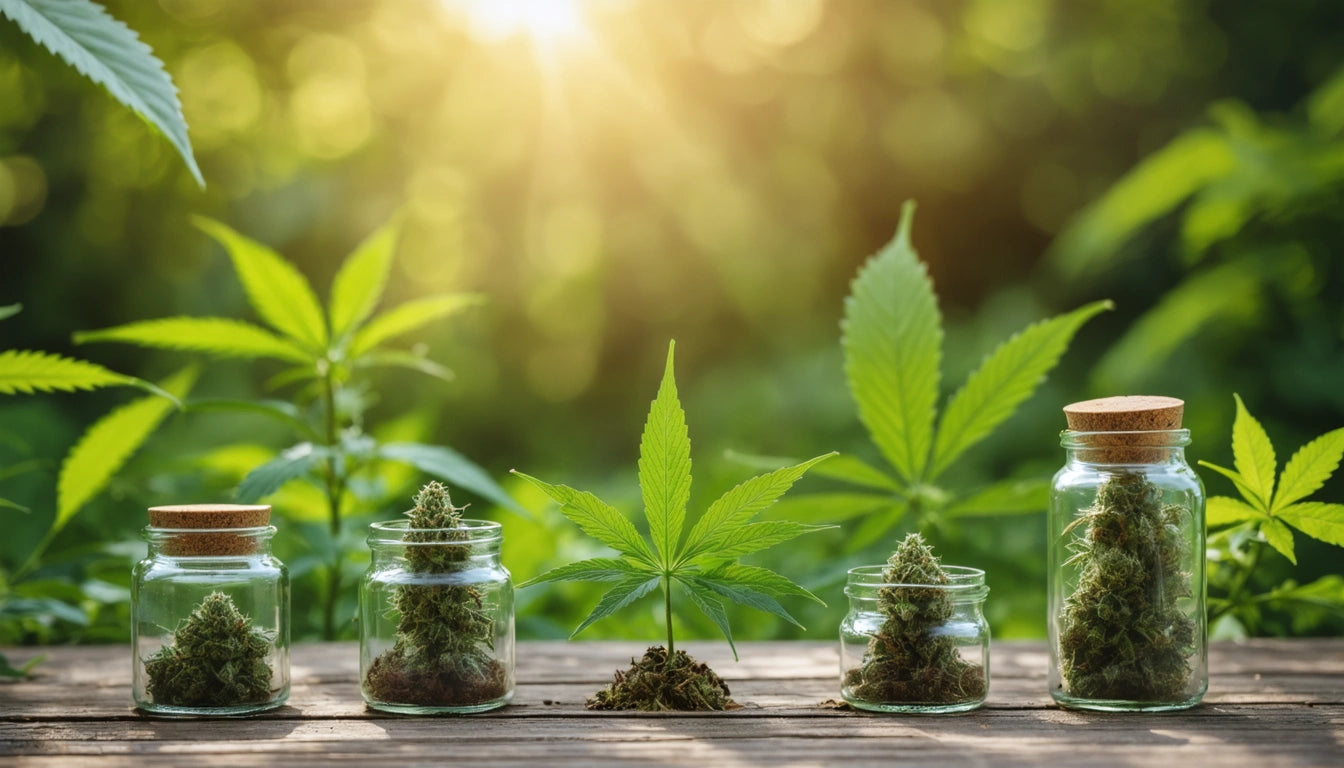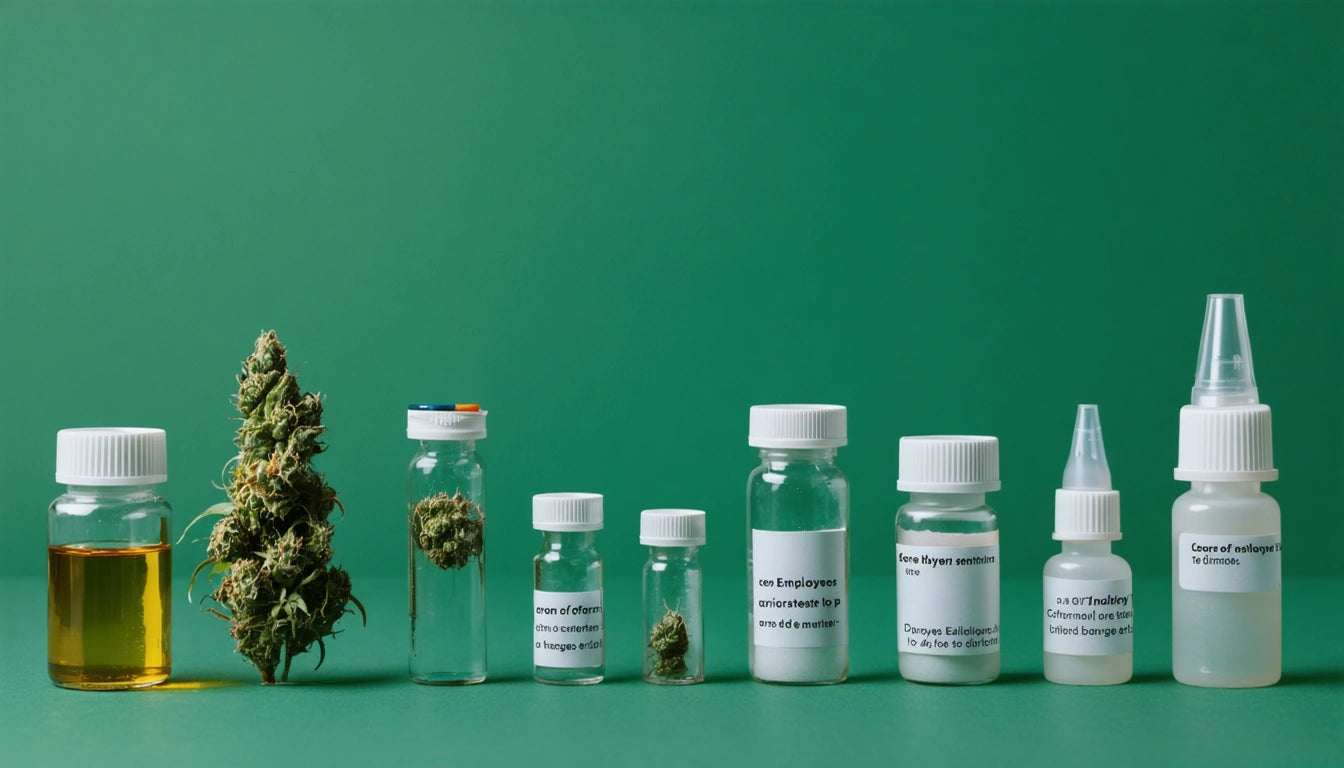Table of Contents
Alcohol vs. Weed: Which Is More Harmful?
The debate between alcohol or weed has intensified as cannabis legalization spreads across the country. Both substances alter consciousness and carry potential risks, but their health impacts differ significantly. This comparison examines the scientific evidence behind each substance's effects on physical health, addiction potential, and social consequences.
Health Impacts: How Alcohol and Weed Affect Your Body
When comparing booze or weed from a physiological perspective, research indicates substantial differences in how these substances interact with human biology.
Short-term Physical Effects
Alcohol acts as a central nervous system depressant that affects multiple organ systems. Even moderate consumption can impair coordination, judgment, and reaction time. Heavy drinking leads to vomiting, alcohol poisoning, and in severe cases, respiratory depression.
Cannabis primarily affects the endocannabinoid system. Short-term effects include altered sensory perception, relaxation, and potential anxiety or paranoia at higher doses. Unlike alcohol, cannabis has no documented cases of fatal overdose from the substance alone.
Long-term Health Consequences
Chronic alcohol use is associated with liver disease, cardiovascular problems, pancreatitis, and increased cancer risk. According to the CDC, excessive alcohol use contributes to approximately 95,000 deaths annually in the United States.
Long-term cannabis use presents more nuanced concerns. While smoking any substance poses respiratory risks, research comparing the effects of alcohol and cannabis shows fewer severe physical health outcomes from cannabis use. However, heavy use may impact brain development in adolescents and exacerbate certain mental health conditions.
Addiction Potential: Dependency Risks Compared
The addictive properties of pot or alcohol differ substantially in both mechanism and severity.
Alcohol Dependency
Alcohol creates both psychological and powerful physical dependencies. Approximately 14.5 million Americans have Alcohol Use Disorder. Severe alcohol withdrawal can be life-threatening, requiring medical supervision during detoxification.
Cannabis Dependency
Cannabis can create psychological dependency, with about 9% of users developing Cannabis Use Disorder. However, withdrawal symptoms are generally milder than alcohol, typically including irritability, sleep disturbances, and decreased appetite without the severe physical dangers associated with alcohol withdrawal.
When deciding between weed or alcohol first experiences, understanding these dependency differences provides important context for harm reduction approaches. As this comparative analysis explains, the addiction potential for alcohol is significantly higher.
Social and Behavioral Effects of Both Substances
Beyond physical health, how do these substances affect behavior and social functioning?
Alcohol and Aggression
Alcohol is strongly associated with aggressive behavior and violence. Research shows that alcohol is involved in approximately 40% of violent crimes, and its disinhibiting effects can increase risk-taking behaviors.
Cannabis and Behavior
Cannabis typically produces relaxation rather than aggression. While it can impair driving and coordination, it rarely induces the violent or reckless behaviors associated with alcohol intoxication. However, it may contribute to amotivational symptoms with heavy, long-term use.
These behavioral differences contribute significantly to the public health impact of each substance. The question of whether alcohol or weed is more damaging extends beyond individual health to societal costs.
Safety and Consumption Methods
How substances are consumed affects their safety profile and potential harms.
Alcohol Consumption
Alcohol consumption methods are relatively standardized through drinking, with risks primarily tied to quantity and frequency rather than method.
Cannabis Consumption Options
Cannabis offers multiple consumption methods, each with different risk profiles. While smoking carries respiratory concerns, vaporizing reduces combustion byproducts. Edibles eliminate respiratory risks but can lead to overconsumption due to delayed onset.
For those concerned about respiratory health, creative alternatives for smoking weed provide options with potentially reduced harm. When storing cannabis products safely, especially around children, child-resistant packaging solutions are essential for preventing accidental ingestion.
Legal Considerations and Public Health Approaches
The legal status of these substances significantly impacts public health approaches and research.
Alcohol enjoys widespread legal status despite its documented harms. Regulatory frameworks focus on age restrictions, impaired driving prevention, and taxation rather than prohibition.
Cannabis legalization continues to expand, with regulatory models still evolving. This changing landscape allows for more research into both potential therapeutic applications and harm reduction strategies.
The Wall Street Journal and other publications have explored whether alcohol or weed cultural perceptions align with scientific evidence about their relative harms, finding significant disconnects between policy, public opinion, and research findings.
Making Informed Choices About Alcohol and Cannabis
When evaluating whether to use alcohol or cannabis, several factors deserve consideration:
- Individual health conditions and medication interactions
- Family history of substance use disorders
- Personal response to each substance
- Context and purpose of use
- Legal status in your jurisdiction
For those who choose to consume either substance, harm reduction strategies include:
- Moderation in quantity and frequency
- Avoiding driving or operating machinery
- Using in safe environments with trusted people
- Being aware of product potency and composition
- Understanding potential interactions with medications
The evidence suggests that while neither substance is without risk, alcohol presents more severe and widespread health consequences than cannabis at both individual and societal levels. This perspective is increasingly reflected in public health approaches that focus on harm reduction rather than abstinence-only policies.











Leave a comment
All comments are moderated before being published.
This site is protected by hCaptcha and the hCaptcha Privacy Policy and Terms of Service apply.